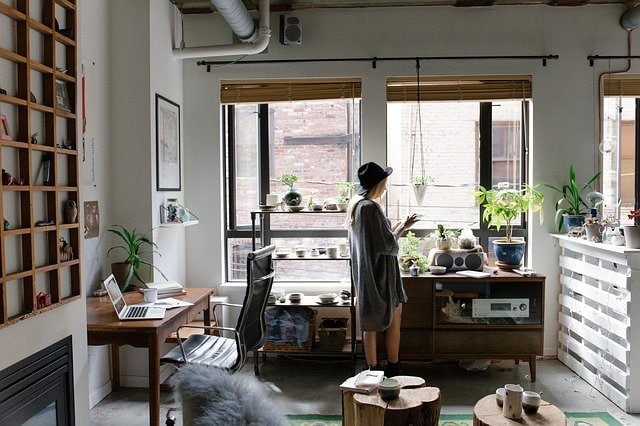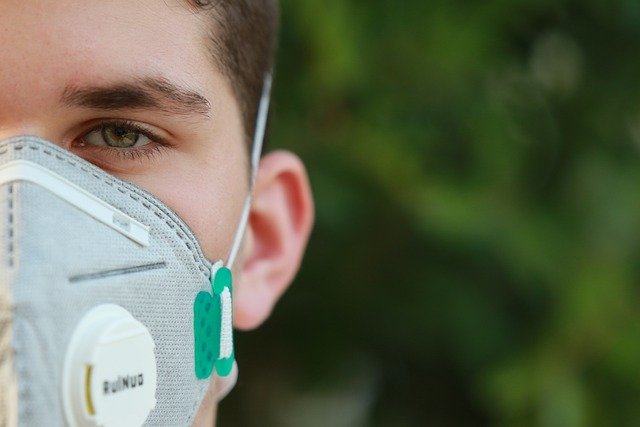If there’s one thing that has spread faster than the coronavirus itself, it is the terms associated with it. Social distancing and physical distancing are part of our everyday lives and have dictated every move we made in 2020.
Both words mean the same thing but physical distancing is more descriptive because it implies that you maintain physical distance from each other while still remaining social in all other ways possible.

Read on to find out how you can make the most positive use of your social distancing.
What is social distancing?
Social or physical distancing is the practice of avoiding physical contact and maintaining a certain distance from others. In times of pandemics or epidemics, this practice must be followed everywhere, whether at work or in public spaces.
The idea of social distancing goes all the way back to the leper colonies of the 18th century, where those with leprosy (a highly infectious disease) were quarantined to be kept away from healthy people. In more recent times, the Spanish Flu epidemic of 1918 required extensive social distancing and quarantining norms to be put in place.

The correct form of social distancing entails the following measures:
- Maintaining a distance of about 6 feet from all individuals at all times
- Cancelling or postponing any large gatherings like parties, parades, social events, and sporting events where keeping a minimum distance is not feasible
- Steering clear of all gatherings in closed spaces
- Avoiding all forms of physical contact such as kissing, hugging and hand shaking
- Ensuring extra protection measures for at-risk individuals like senior citizens, children or those who are immunocompromised
Follow social distancing in public
While it is recommended that you avoid being in public as much as possible, if you do have to go out, you should stick to these measures:
- Maintain a distance of 6 feet from others
- Wear a mask and sanitize your hands frequently
- Avoid large gatherings and public spaces
- Stay at home if you feel the onset of any symptoms related to COVID
- Avoid all forms of physical contact such as shaking hands, hugging and kissing
Social distancing for kids
When it comes to kids adhering to physical distancing norms in school, the most important consideration is whether your child is displaying any symptoms of the virus. Potentially sick children must not go to school and must stay at home in isolation as far as possible.

While at school or in public places, your child should be aware of all the social distancing norms and should know how to put on and take off a mask. Schools will provide guidelines for children and parents during such times, so do make sure you and your family are aware of any requirements.
Check out our blog post about how to wash your hands properly.
Social distancing in the workplace
During social distancing times, most workplaces should offer a work-from-home option. If you are an essential worker or if you have to go to office, you will have to follow these regulations:
- Barring all forms of physical contact such as shaking of hands
- Keeping masks on at all times
- Delaying all physical meetings and conducting them virtually through video or phone
- Restricting handling of food and sharing within work premises
- Conducting essential larger meetings in open air spaces
- Ensuring easy access to hand sanitizers throughout the premises
- Educating employees on personal hygiene
- Eating lunch in isolation or outside rather than in a common dining area
- Regular disinfection of all surfaces
- Limiting air-conditioning and keeping windows open

It is mandatory for all organizations to chalk up a COVID-19 physical distancing plan which is in accordance with the National COVID-19 Coordination Commission (NCCC) and the Safe Work Australia National COVID-19 Safe Workplace Principles.
Social distancing at home
As Australia deals with COVID-19, there are different state or territory government restrictions to slow the spread of the virus. For most of us, home is the safest place to spend your time.
However if you or someone in your household is quarantined or has COVID-19, you will have to follow social distancing norms there too.
Here is how to practice social distancing at home:
- Only one individual is in charge of taking care of the sick member
- The sick person should be restricted to a single room and the door should be kept closed at all times
- Both caregiver and infected family member should wear a mask when in the same room together
- Set aside crockery and utensils used by the infected person and clean them separately
- Provide double garbage bags for all wastepaper baskets in the room of the infected person. When putting garbage out, follow protocol dictated by your state or neighbourhood.
- Consult your medical practitioner for the best course of action, for testing and treatment rules, and to understand what to watch out for.
- If you have family members with compromised immunity or with co-morbidities, try to find separate accommodation for them if possible. If this isn’t possible, keep them isolated and far away from the infected person as much as possible.

Read our blog post about staying sane during your home quarantine.
Travelling during social distancing regulations
You should avoid all forms of travel when asked to follow physical distancing norms. Any non-essential travel should be postponed and essential travel should be planned carefully.
Essential travel includes any commutes you need to do for daily life, such as going to work or getting groceries. Non-essential travel includes travel for the sake of socializing or to run errands that are not important.
If you must travel or commute during social distancing times, follow all guidelines for masks and sanitizers. Try to avoid long durations of time spent in air-conditioned spaces or crowded public areas.

Travel will become less regulated as the government continues to ease restrictions on all forms of travel but you should be aware that it may be slower and less efficient than you are used to.
Understanding the Roadmap to a COVIDSafe Australia
When learning about physical distancing within Australia, the ‘Roadmap to a COVIDSafe Australia’ may have popped up. This is a 3-step program introduced by the government to gradually reopen the economy while containing the spread of the COVID-19 infections. The government has given flexibility to each state and territory in terms of when to initiate the plan. The 3-step plan is as follows:
Step 1
The first steps seeks to bring together family and friends by easing restrictions on public gatherings and home visits. It allows the opening of a few shops, community areas and hospitals as well as permitting kids to go to school. It will be possible to book regional travel (with some restrictions) and social events like small weddings or funerals will be possible.
Step 2
This phase further increases the size of gatherings and frequency of home visits whilst allowing even more shops and services to open up.
Step 3
Under this step, restrictions will be eased for domestic travel and large gatherings. This step depends on the rate of transmission in each state and will not come into effect unless states deem it completely safe to do so.
Why do we need to practice social distancing?
Physical distancing is the first and most effective form of defence that we have against the spread the coronavirus. It becomes harder for the virus to spread between individuals if there is sufficient distance maintained. While restrictions are being lifted in a number of places, it is still recommended that you stay home if you have the choice.

Social distancing helps curb the spread of the virus because of the way COVID-19 spreads:
- Direct physical contact with an infected person
- Contact with the bodily fluids of an infected person such as when they sneeze, speak, laugh or cough
- Handling or coming in contact with contaminated surfaces such as tables and door handles and then touching exposed areas of your face or mouth
Social gatherings during social distancing
The Australian Government has given the green light for social gatherings, but the final decision to do so rests with the states and individual territories. Each region has their own restrictions on how many individuals can come together in one place. You can check online to see the latest restrictions for social gatherings in your state of territory before making plans.
Regardless of how many people are allowed to get together in a public place, it will be mandatory for you to maintain physical distancing. It is also a good idea to avoid social gatherings unless necessary. If you do have to meet other people, keep your mask on and follow rules of keeping 6 feet apart. It goes without saying that if you have symptoms of any illness, do avoid any social contact.
Understanding primary and secondary contacts
The terms ‘primary contacts’ and ‘secondary contacts’ are subsets of a ‘close contact’ when discussing physical distancing.

For someone infected with the COVID-19 virus, the most infectious time is 48 hours before the onset of symptoms until they are no longer deemed infectious. If you have been in contact with an infected person during this time, you are considered a close contact.
A close contact may further be classified as a primary or secondary contact.
A primary contact has come into contact with an infected person for more than 15 minutes or has been in an enclosed space for over two hours with an infected person. If you find out that you are a primary contact, it is necessary for you quarantine yourself for 14 days following contact, whether you test positive or display symptoms.
A secondary contact is anyone who has been near a primary contact for more than 15 minutes or has been in an enclosed space with the primary contact for over two hours. If you find out that you are a secondary contact, you should quarantine yourself until you know that the primary contact has not been infected.
Close contact can happen in many ways including:
- Living in the same premises
- Coming into direct contact with body fluids of an infected person
- Sharing enclosed spaces for more than two hours
- Being in a setting where there is high incidence of infection such as another country with high transmission rates or a quarantine space for suspected individuals
- Having direct physical contact with an infected person for more than 15 minutes
- Being in an indoor space where there are concerns about nature of contact
- Coming into contact with objects used by the infected person and then touching exposed areas of your face or mouth
There are certain individuals who can fulfill the criteria for primary or secondary contacts and still not be classified as one. This includes all healthcare workers and others using full PPE and following all precautions to limit infections while taking care of infected individuals.
Is it important to wear a face mask while practicing social distancing?
While the rules for wearing a mask vary within Australia as each region has different rules of physical distancing, it is highly recommended for you to wear a face mask for your own safety and that of others.

You should especially wear a mask if you:
- Feel the onset of COVID-19 symptoms and are considering being tested
- Are in enclosed spaces such as supermarkets, healthcare centers and worship areas
- Cannot maintain the minimum physical distance of 6 feet from others
- Are in the same room with someone where either of you have been displaying symptoms
- Are using public transport or sharing a ride with another individual
- Are about to visit at-risk individuals
With many countries going into extended lockdowns, social distancing has triggered a wave of mental health problems and new realities to deal with. Physical distancing has can make you feel isolated and alone, can be difficult for those who rely on others for help with daily chores, and has worsened the situation for those living in situations of domestic violence.
For those who are finding it challenging to manage the restrictions of social distancing, Avaana is here to help. Talk to a counselor online or find meditation classes to help calm your anxiety.



